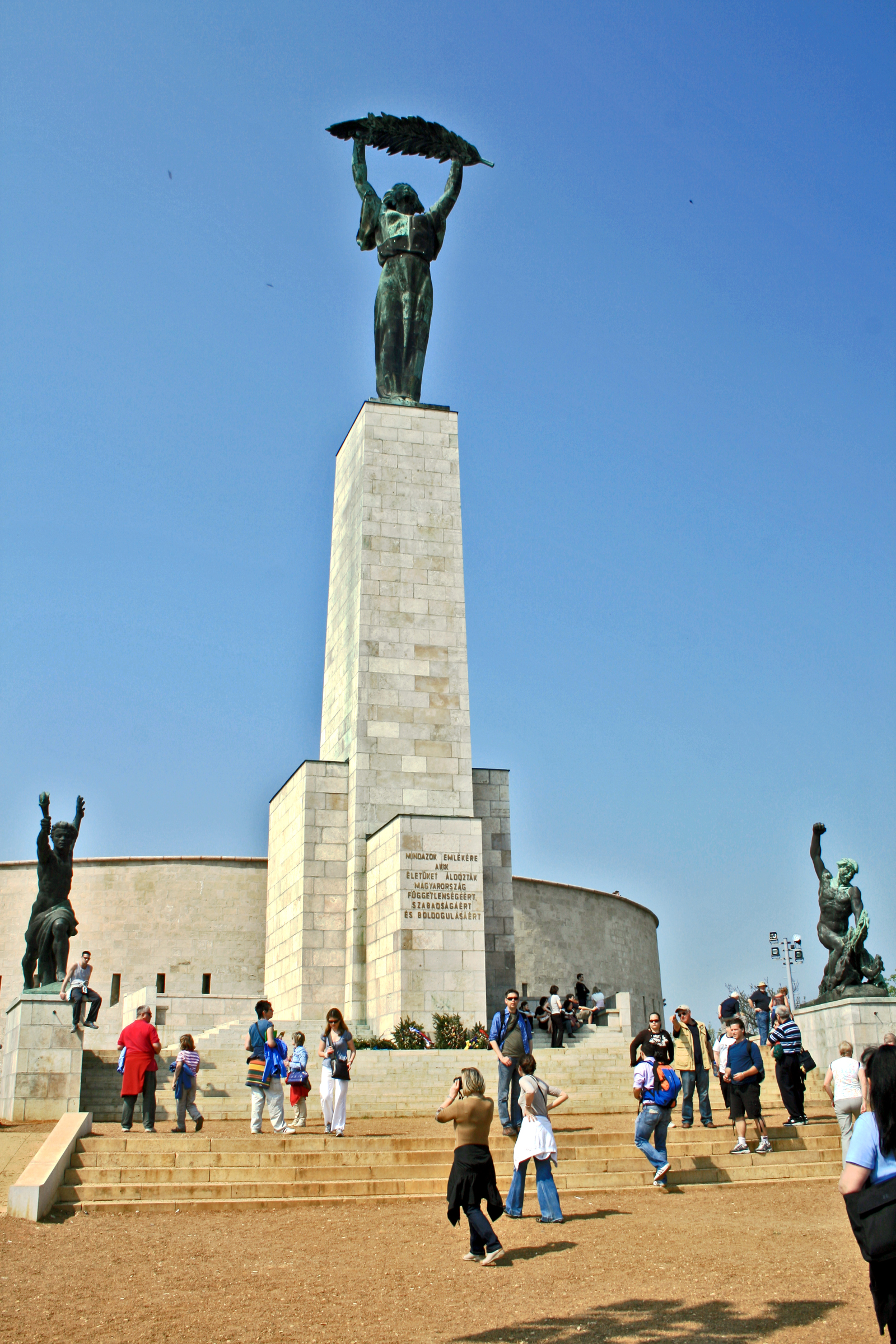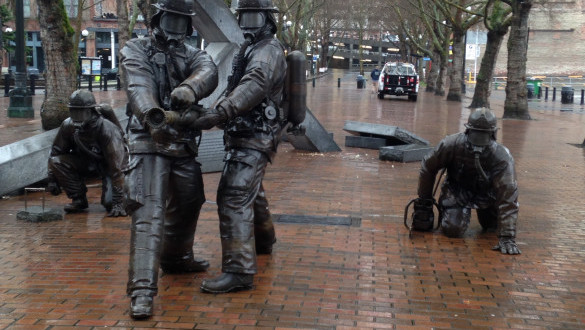This is not revising history, or "viewing the past through a modern lens," as you state. This is recognizing that present-day America is informed by its past, and if we intend to improve, we must address the issues that white men have successfully swept under the carpet for hundreds of years. The indigenous, black, asian, women, disabled, and other people who make up America have been marginalized, denied, and outright killed for asserting the same rights we white men take for granted. Imagine standing in any of their shoes, going into a public building to exercise your Constitutional rights, and having to do so below the overbearing statue of a man who saw you as less than him ... less than human. "But what about the good stuff he did?" When I lived in Hungary, I could easily thrive without a car because there is a mature and extensive electrified transportation network that could get me cheaply from the Baltic Sea to the Balkans, and from Moscow to Vienna. This is solely due to Stalin's hell-bent drive to get electricity EVERYWHERE, to modernize transportation and home life for every citizen of the USSR. Today, everyone relies on this network - from streetcars in city centers to international train travel - without genuflecting before the statue of Stalin, and constantly bringing up his name when appreciating the ease they have in moving around Europe. The same can be done for Thomas Jefferson. As an author in our founding documents, and one of the first people to step up and serve in the office of President, he deserves recognition. In school, during subjects that pertain to those topics. We don't need a statue of him - or any individual, honestly - to remind ourselves of the history of our institutions. In fact, I'd say that a statue of Lady Justice would be far more appropriate in a government building, since she stands as an idol for an idea/ideal rather than a flawed human individual. It has taken me a long time to come around to this way of thought, but I am now convinced that erecting statues of people is a poor option. Glorify their good works, not the person. Teach kids that a HUMAN BEING, JUST LIKE THEM, came up with these good ideas, and they can too! Don't literally put an old white man on a pedestal like he's the only one that could have provided that value to the world. Not only is it untrue, it whitewashes people who were truly terrible human beings.
It is very odd to me that you want children to see that ideas come from humans, but are opposed to showing the statue of the human that conceived of that idea. As for "old" white dudes, Thomas Jefferson was 33 years old when he wrote the declaration of independence. Not exactly a geezer. Is it okay for young white people's ideas to be celebrated? Young hispanic people? Middle aged asian people? Eldery inuits? And if so, why can't those ideas be celebrated with an image of that person? What's wrong with that? Truly baffled. And, btw I am not indoctrinated by any means. I know that the history that was spoon-fed me in my youth was/is immensely propagandized. It has taken me a long time to come around to this way of thought, but I am now convinced that erecting statues of people is a poor option. Glorify their good works, not the person. Teach kids that a HUMAN BEING, JUST LIKE THEM, came up with these good ideas, and they can too! Don't literally put an old white man on a pedestal like he's the only one that could have provided that value to the world. Not only is it untrue, it whitewashes people who were truly terrible human beings.
like he's the only one that could have provided that value to the world. Not only is it untrue
- I disagree with this. Often times it is very true. There are men and women of their age that were singular and provided value and ideas that no others could have. Da Vinci, Benjamin Franklin, Beethoven, Shakespeare, O'Keefe. They provided a value that only they could have. It's okay to celebrate exceptionalism and it's okay to call out hypocrisy. But what worries me is the question, who decides? Who are the moral gatekeepers? You? Me? I say let the statue stand and change the placard next to it to make it clear re his accomplishments and shortcomings. Of which there were plenty of both.
This is the same logic as, "why are my keys always in the LAST place I look?!?" From Einstein to Feynman to Jesus Christ to Bagwhan Shree Rajneesh, those people are famous because their ideas got popular. Not because they were the ONLY people that could have had those ideas. If it wasn't Einstein or Feynman, it would have been someone else because the base principles were sitting there to be identified by a sharp intellect. Nothing JC or Rajneesh said was new or original. All of the ideas they shared were old by the time they said them. Lionizing/deifying a human for an idea is illogical and unproductive, and is surprisingly defeating to young people's development. (See: Loewen) Turns out that raising an individual person on a whitewashed pillar - as opposed to elevating their few good ideas - shows the child that some are born to greatness, and they (the child) are not. "You are just a person; not great, like Einstein. He was special. You don't have that." Statues as art? Great. Statue of Liberty. Lady Justice. Hell, even statuary of the four horsemen of war, famine, pestilence, and death, have more conversational and educational value than a statue of a person. Separating the idea from the individual is, in fact, the best way to get the most out of the idea. Then, in a sociology elective in college, the student can dig into the various people behind ideas, and how/why people with serious issues can have good ideas, too. Creating statuary of human beings to glorify their ideas/deeds is problematic. So why continue in this way? There are far better ways to raise ideas and ideals on pedestals... The Liberty Statue in Budapest: The Book Fountain in Budapest: Fallen Firefighter statue in Seattle: The Shoes on The Danube (memorial to Jews killed in Budapest during the Holocaust): There are men and women of their age that were singular and provided value and ideas that no others could have.




